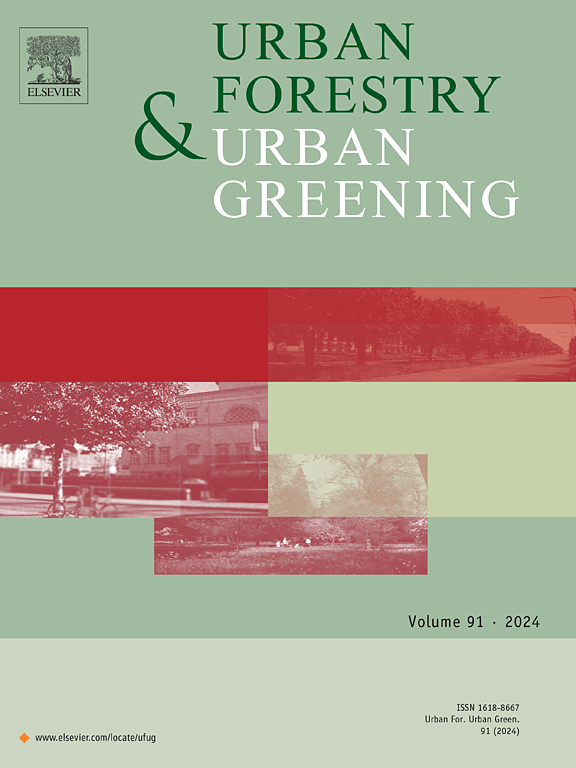“It is not a complicated question but it is very complex” – Insights on school ground greening from practitioners
IF 6.7
2区 环境科学与生态学
Q1 ENVIRONMENTAL STUDIES
引用次数: 0
Abstract
School ground vegetation supports children’s health, learning, and ecosystems but faces challenges in implementation and management, with limited research addressing the entire greening process. This study investigates what green practitioners in Sweden experience as challenges when implementing and managing school ground vegetation. Expert interviews were conducted with 26 experienced practitioners and revealed issues across the implementation chain. Challenges were categorized into direct and indirect factors. Direct factors included practical concerns such as avoiding monocultures, preventing soil compaction, and differing opinions on species selection, planting size, fencing, and managing children’s movement. Indirect factors focused on lack of knowledge of either the benefits of vegetation or what is needed for its establishment among the actors surrounding the respondents. Using the Policy Arrangement Approach, the study analysed how actors, rules, resources, and discourses shape implementation. The analysis highlighted the significance of regulations and the need for increased knowledge of both outdoor pedagogy and vegetation requirements.
“这不是一个复杂的问题,但它非常复杂”——实践者对校园绿化的见解
学校地面植被支持儿童的健康、学习和生态系统,但在实施和管理方面面临挑战,针对整个绿化过程的研究有限。本研究调查了瑞典的绿色从业者在实施和管理学校地面植被时遇到的挑战。与26名经验丰富的从业者进行了专家访谈,并揭示了整个实施链中的问题。挑战分为直接因素和间接因素。直接因素包括实际问题,如避免单一栽培、防止土壤压实、对物种选择、种植规模、围栏和管理儿童活动的不同意见。间接因素集中在缺乏对植被的好处或在应答者周围的行为者中建立植被所需的知识。使用政策安排方法,该研究分析了行为者、规则、资源和话语如何影响实施。分析强调了条例的重要性和增加户外教学和植被要求知识的必要性。
本文章由计算机程序翻译,如有差异,请以英文原文为准。
求助全文
约1分钟内获得全文
求助全文
来源期刊

Urban Forestry & Urban Greening
FORESTRY-
CiteScore
11.70
自引率
12.50%
发文量
289
审稿时长
70 days
期刊介绍:
Urban Forestry and Urban Greening is a refereed, international journal aimed at presenting high-quality research with urban and peri-urban woody and non-woody vegetation and its use, planning, design, establishment and management as its main topics. Urban Forestry and Urban Greening concentrates on all tree-dominated (as joint together in the urban forest) as well as other green resources in and around urban areas, such as woodlands, public and private urban parks and gardens, urban nature areas, street tree and square plantations, botanical gardens and cemeteries.
The journal welcomes basic and applied research papers, as well as review papers and short communications. Contributions should focus on one or more of the following aspects:
-Form and functions of urban forests and other vegetation, including aspects of urban ecology.
-Policy-making, planning and design related to urban forests and other vegetation.
-Selection and establishment of tree resources and other vegetation for urban environments.
-Management of urban forests and other vegetation.
Original contributions of a high academic standard are invited from a wide range of disciplines and fields, including forestry, biology, horticulture, arboriculture, landscape ecology, pathology, soil science, hydrology, landscape architecture, landscape planning, urban planning and design, economics, sociology, environmental psychology, public health, and education.
 求助内容:
求助内容: 应助结果提醒方式:
应助结果提醒方式:


